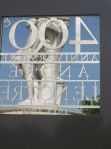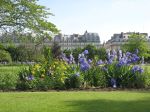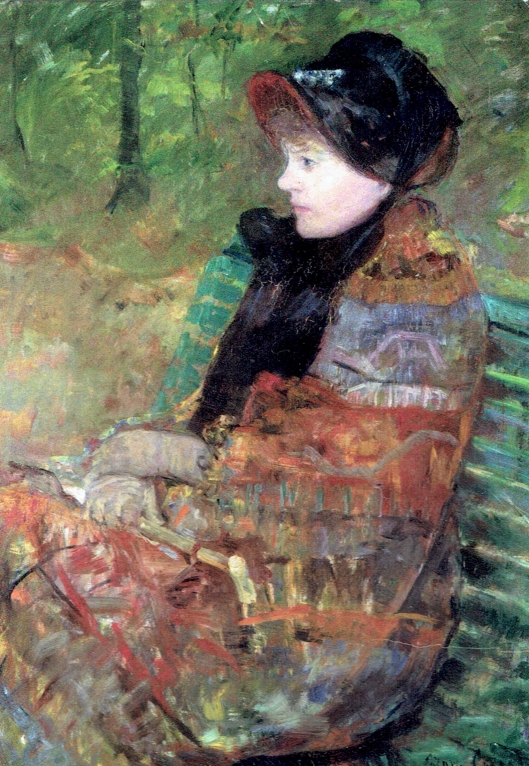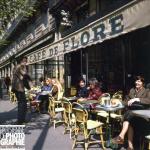
Tuileries decorative sign – 400th Anniversary of Andre LeNotre’s Birth
The Gardens of Andre Le Notre
Stroll along tree shaded paths, gaze at swans trolling the reflecting pools, watch the fountains play. There might be better ways to spend the day in France, but visiting public gardens is one of the most agreeable. And the elegant decorative creations of master landscape architect Andre Le Notre are the ultimate in classic French gardens. Many of Le Notre’s gardens are close to Paris, accessible by metro or RER. And generally, admission is free. The 400th Anniversary of Andre LeNotre’s birth was celebrated throughout France in 2013.

Tuileries Gardens, Paris
The Tuileries Gardens
Anyone whose been to Paris knows the Tuileries gardens bounded by Place Concorde and the Seine and right in front of the Louvre. The pebble paths under the lines of trees, the little green folding chairs, the kids, the dogs, the clusters of pensioners in berets, all define the Tuileries. Visitors today experience a refurbished Tuileries Gardens perhaps closer to the original version designed by Le Notre in 1680.
In 1992, the Tuileries were substantially remodeled. Recreating the botanical intentions of Le Notre was the work of Louis Benech and Pascal Cribier, commissioned by the Ministry of Culture to work with architect I. M. Pei. Changes wrought by city life have altered Le Notre’s original grand vision anyway. The �vanishing point in his elaborately detailed vista of the Tuileries became the Champs Elysees.
Information: http://en.parisinfo.com/paris-museum-monument/71304/Jardin-des-Tuileries
The Grand Garden Tradition
Ambling along tree shaded paths, gazing at swans trolling the reflecting pools, watching the fountains play, visitors relax into la bonne vie – the good life. French national gardens are the ultimate example of exceptionally pleasing environments open to the public.
 Le Notre specialized in formal gardens for wealthy chateau owners — dukes, counts and kings, not to mention the mansions and chateaus bestowed on mistresses and paramours of the nobles.
Le Notre specialized in formal gardens for wealthy chateau owners — dukes, counts and kings, not to mention the mansions and chateaus bestowed on mistresses and paramours of the nobles.
Then, as now, a formal garden expresses grandeur and tames nature in a perhaps misguided and usually futile attempt to demonstrate the power of human will over the natural elements. These 17th century men with money wanted fancy gardens to show off their power. Le Notre obliged them, but he was not a hired hand. He insisted on following his own vision, incorporating wild spaces into the garden design and creating long vistas. His reliance on lengthened perspective is timeless and especially relevant today with our crowded urban spaces‹h�‹�that offer limited viewpoints. Le Notre also figured open areas into his vast panoramas. These days, his graded grass terraces in the parks around Paris are dotted with sunbathers and the open spaces have become sports fields, but the new uses do not diminish Le Notre’s overall vision.
So, take a break from the shopping and sightseeing. Imitate the royalty of times past and stroll through Le Notre’s gardens along paths bordered by yews trimmed into tight inverted cones. Rest for a moment and admire the planted vistas created by Le Notre to draw a visitor’s eyes far into the horizon, the way an artist directs the viewer to a focal point in a painting. Amble in the shade of chestnut trees along the lanes of Versailles, St. Cloud, Seaux, and St. Germaine en Laye. These gardens of Le Notre are near Paris, accessible by Metro or RER, and best of all, admission is free.
Domaine Nationale de Saint Germaine en Laye
The main attraction in the Domaine Nationale de St. Germaine en Laye is the Grande Terrasse, which extends more than 2 kilometers towards Maisons Lafitte, a nearby chateau open to the public. La Terrasse de Le Notre, as it’s also called, is a weekend favorite for Parisians who stroll en famille. Elegant women of a certain age tow their little dogs on leashes. Young couples in the process of discovery hang arms around each other’s necks or share earbuds and digital music.
Solo men lean on the wall and smoke, watching the passing scene. The perambulators at La Terrasse have become more publican since Le Notre created the long walkway for the court of Louis XIV three hundred years ago. Carved out of a forest, the gardens of St. Germaine en Laye feature parterres bordered with beds of shrubs and flowers, circular pools, and broad paths that create diagonal walks from fountain to fountain. The adjacent forest beyond the gates of the formal gardens has extensive paths for aerobic walking.
Overlooking the Seine near the beginning of the Grande Terrasse is the Pavilion Henri IV restaurant. Culinary enthusiasts take note: Sauce Bernaise was created here in 1847 by the chef Collinet in honor of Henri IV who was from the Berne region.
An arch in the wall surrounding the gardens of St. Germaine-en-Laye marks the entrance to the restaurant courtyard. The 3 or 4 course luncheon menu is usually a good value. Adjacent to the gardens is the Chateau of St. Germaine en Laye, home of the National Museum of Antiquities. King Louis XIV was born in the vast royal palace Chateau Saint-Germain-en-Laye.
Information: http://www.parcsetjardins.fr/ile_de_france/yvelines/domaine_national_de_saint_germain_en_laye-943.html
St. Germaine en Laye is 19 kms. west of Paris. The easiest way to get there is by RER line A, stop at St. Germaine.
Versailles
Think of Versailles and scenes of courtiers in the Hall of Mirrors or Marie Antoinette cavorting as a shepherdess come to mind. But Versailles is more than just an awesome palace. For some, the greatest beauty of Versailles is expressed in the gardens of LeNotre.
Le Notre’s immense dramatic experiment in taming nature, pruning and stretching the flora to fit his personal vision was an innovation for garden design. Other landscape designers have contributed to Versailles and fortunately for us, their collective vision was so comprehensive and grand that it discouraged modern tampering and the vistas have remained mostly intact.
If the lines of tourists waiting to tour the Chateau at Versailles are long, and they nearly always are, walk steadily past them, right through the arcade that marks the edge of the gardens. Inside the formal gardens, the flower beds, topiary yews and ankle-high hedges are resemble embroidery on the lawns. Those with more stamina and curiosity should push onward, down into the endless tree-bordered lanes, to the meadows, the canals and quasi-wild patches of woods that compose the grand Parc de Versailles.
Information: http://www.chateauversailles.fr/gardens-and-park-of-the-chateau-
Versailles is accessible by train on the RER C line with Paris – Versailles Rive Gauche zones 1-4 ticket. (T+ ticket is not accepted on this route).
SNCF trains arrive at the Versailles Chantiers station leaving from Paris Montparnasse Station. SNCF trains arrive at Versailles Rive Droite Station leaving from Paris Saint Lazare Station.
Seaux
Le Notre’s intimate masterwork, Seaux, is a cathedral of the outdoors. The long nave has its axis at the fountains. The hills stretch out as far as the eye can see because Le Notre’s restructuring of the land creates a foreshortening that fills the visual panorama. The eyes seem to accelerate as they scan the view. The gardens at Seaux are punctuated with tidy reference points — triangular tipped firs, blooming roses at the corners of the paths — that keep the roving eye engaged.
Much of Seaux has been remade; these are not the benches and stairs constructed in the 17th century. And where the high and mighty once amused themselves, couples with frisbees and dogs leap past sunbathers.
In the woods, a man and a woman are practicing martial moves with long poles, flipping the poles behind their heads around to the front and to the ground. Glimpsed through the alleys of trees their shadows play double and suggest Medieval jousters.
Information: http://domaine-de-sceaux.hauts-de-seine.net
Seaux is a station on the southbound RER line. The entrance is about a 10 minute walk from the station. Although Metro tickets are accepted into RER turnstiles, it is imperative that an RER ticket be used. Attempting to exit using a Metro ticket at an RER station invites a substantial fine. Its proximity to Paris makes Seaux a popular weekend destination.
Parc St. Cloud
From the heights of Parc de St. Cloud, one can see the landmarks of the Paris skyline: Sacre Coeur in Montmartre, the Eiffel Tower, Les Invalides, and the new office towers in La Defense. The park is built on a palisade on the banks of the Seine. Famous for Le Notre’s waterworks and cascades, St. Cloud attracts city dwellers in search of respite from summer heat.
Cars are permitted in part of the park which alters the feel of Le Notre’s self-contained garden universe. There are huge distances to traverse in the park, and cars make the outer reaches more accessible but vehicles are intrusive, especially if the radios are blaring. Seek instead the dark woodsy interiors, where one can look across tree lined alleys to open green spaces or stand on the expansive green lawns and look into the forest spaces. There are stands of perfectly aligned trees which create interesting geometric shadows.
Information: http://saint-cloud.monuments-nationaux.fr
To get there, take Bus 72 from the center of Paris and descend after the bridge over the Seine. Or, take the Metro to Porte St. Cloud station and walk across the bridge following signs to the pedestrian crossing to Parc St. Cloud. Opening and closing times vary depending on the month.
Fontainebleau.
The gardens encompass 130 hectares. Visitors can explore the gardens on their own. Activities such as horse-drawn carriage rides, jeu de paume (real tennis) games, Segway rides, boating and hot-air balloon trips are offered for a fee. Those who also want to tour the chateau should plan an all-day visit.
Of particular interest to followers of Andre LeNotre is the Grand Parterre, the largest formal garden in Europe. Le Nôtre created these gardens between 1660 and 1664 along with Louis Le Vau. It was Louis XIV’s great achievement at Fontainebleau. While some features such as the original box hedge work in the formal garden were lost under Louis XV, the layout of the herb gardens remains. The water features elaborately complimented with statues are also intact, such as the Bassin des Cascades (17th and 19th centuries).
Information: http://www.musee-chateau-fontainebleau.fr/spip.php?lang=en
Vaux le Vicomte
If Vaux le Vicomte seems familiar, it is. The quintessential French Chateau has been featured in many films and television shows, fashion and travel advertising spreads.
At Vaux le Vicomte, Le Notre stretched his vision. This was the first time gardens were planned with symmetry on the grand scale. Standing on the stone steps behind the Chateau, we followed Le Notre’s cultivated gestures down the staged terracess to the traversal pool and up the hill to the vanishing point on the horizon a mile away. By restructuring the grade, Le Notre expressed an overall ordering and conquering of nature, the hallmark of his era.
Nicolas Fouquet, finance minister for Louis XIV, commissioned Le Notre and gave the budding landscape designer his head.Fouquet never got the chance to enjoy the estate; he was dismissed from his post, then recalled. Finished the gardens in 1661.
The trees are severely cut back to retain their shape. Eighty years old in 1991, they have been replaced many times since Le Notre’s time. Cut to a triangular cone shape, the boxwood at the corners where paths intersect defines the squares of lawn. When viewed from a distance, the knobbed boxwood punctuating the estate looks like chess pieces in play on a board. Intricate weave of low hedgery.
During the long walk back, a tour of the perimeter and cross paths is more than 2 miles, we speculated that the after dinner stroll kept the nobles lean. As you face the Chateau at the lower traversal pool where the swans parade, on the right there is a path tunneled through a strip of woods that ends at the chateau. To reach the path, go up the staircase at the extreme end of the pool to a cleared area on top with two rows of topped off trees constructed into an arbor that gives excellent shade in the summer. The path runs parallel to the formal gardens and through the branches one can observe people strolling in the gardens. The opportunity to survey tamed nature from behind a veil of trees left intentionally wild is exactly the kind of romantic juxtaposition that amused Le Notre’s social contemporaries. Whether the nature path was part of Le Notre’s plan is not clear, but indeed he would have enjoyed the horticultural joke.
Privately owned, this is said to be the most attentively restored of Le Notre’s efforts. Address 7 Chateau de Vaux le Vicomte, Maincy. Candlelit tours and other events are available. Tickets purchased online are reduced price.
Information: http://www.vaux-le-vicomte.com/en/preparer-votre-visite-en/visits-for-individuals
Open daily from 10 a.m. to 6 p.m. from 9th March until 11th November 2014.
On 29th and 30th November; On 6th, 7th, 13th and 14th December and from 20th December 2014 until the 4th January 2015. Closed on 25th December and 1st January.
Maintenon
The Chateau de Maintenon is 18 kms from Chartres. It was the private home of Madame de Maintenon, the second spouse of Louis XIV. With the able guidance of LeNotre, the park and gardens were designed by Louis XIV and Madame de Maintenon. The garden is small so you can easily tour it without a guide. Middle ages era structure was enlarged after Madame de Maintenon purchased it in 1675. Schematic drawings of the unfinished aqueduct designed by Vauban to carry water from the Eure River to Versailles may be on display and finished pillars of the aqueduct dominate one end of the property.
Information: http://www.chateaudemaintenon.fr/en
Chateau de Maintenon, Place Aristide Briand, 28130 Maintenon, Eure et Loir. Opening and closing times vary depending on the season and day of the week.






























